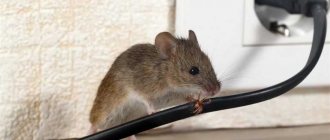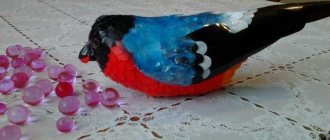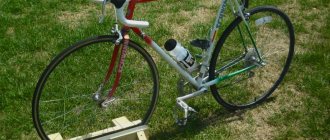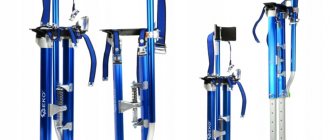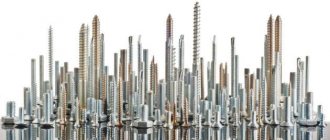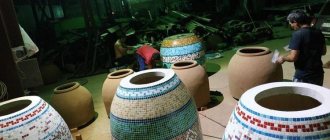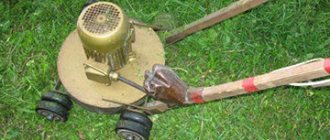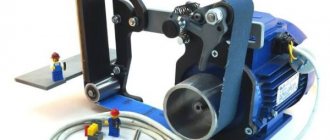Many experienced aquarium keepers will not breed fish without the necessary equipment to set up an aquarium. One of the leading roles is played by filtration systems, which are used to purify water from mechanical and biological components and to saturate the liquid with oxygen. You can purchase internal and external filters for an aquarium in specialized stores or make them yourself, which will save you a lot of money.
The filter plays an important role in the aquarium
How to make it yourself
The cleaner is created from scrap materials that are sold in hardware stores. One device is used in containers up to 500 liters. For a larger aquarium, two units are needed. Before manufacturing, it is worth understanding the principle.
How does it work
Homemade external aquarium filters provide biological filtration. Cleansing takes place according to the following scheme:
- Water is pumped through a tube using a pump.
- In the device, liquid passes through filter parts. Bacteria convert ammonium into nitrates.
- Clean water returns through the outlet tube.
After starting, the filter works like a mechanical one, after 2–4 weeks the number of beneficial bacteria inside the filler increases, and natural cleaning of the aquarium environment occurs.
Necessary materials
To design an external filter, you will need:
- base (bottle or canister);
- material for filter cassettes (plastic pots);
- hoses or flexible pipes;
- electric pump;
- fitting;
- padding polyester or cotton wool;
- foam sponge.
For an aquarium with a volume of 100 liters, a plastic bottle is suitable, for spacious vessels - a canister or a plumbing pipe with plugs. The material for filter cassettes can also be a kitchen mesh, a vegetable drawer or a container of suitable diameter. New components are purchased, since the old ones contain toxins accumulated during operation. Materials must be non-toxic. Metal elements without lubrication and protected from direct contact with water are suitable. It is better to choose hoses that are durable and without kinks.
Why do you need a biofilter?
There are several types of cleaning. The most common is mechanical, but there are also chemical and biological types. Scientists believe that it is the latter type that is considered the most important and necessary.
This is explained by the fact that in every aquarium there is organic matter left behind by fish and other inhabitants. Decomposition of feces, food residues, plant leaves and gases exhaled by animals provoke the release of ammonia. It poses a huge danger to all living creatures living in the home underwater world.
At a concentration of 0.2 mg/l, ammonia will kill all fish, and for some varieties the dangerous indicator is 10 times less. Accordingly, the aquarist needs to carefully monitor such biological processes and avoid situations where animals may suffer.
Ammonia can be dealt with in various ways. The simplest is regular water changes. They are held weekly, but not more often. Such procedures are very stressful for the inhabitants of the aquarium and, in addition, they can upset the fragile balance of the home ecosystem.
Therefore, the best way to deal with ammonia is through beneficial colonies of bacteria that oxidize it, thus converting it into nitrites and then into nitrates. The latter, of course, in certain concentrations can also cause harm to animals, but they are also a nutrient for natural plants.
This is the principle of biological filtration. It takes place in several stages:
- Fish leave behind waste products;
- Feces, food scraps and leaves decompose, releasing ammonia;
- Bacteria process them;
- The resulting nitrate is absorbed by living plants.
Bacteria independently form in the aquarium during the nitrogen cycle. They live in water, on walls, on decorations. They help maintain the necessary balance, but sometimes it happens that these colonies are not enough, and then ammonia still accumulates, poisoning all the animals. In this case, the task of the aquarist is to multiply microorganisms so that they can cope with high biological loads.
We recommend reading the article: How to choose lighting for an aquarium
Other models
In addition to external filters, there are other filters for aquariums.
Airlift
Such devices purify water using air. They are gradually losing their popularity due to low efficiency. Inexpensive, they can be made at home. You can make an air filter from a plastic tube. At the upper end there is a square that supplies water. A hose is inserted at the bottom of the tube, on which a sponge is placed.
Mounted
For a small aquarium, you can make a hanging filter with your own hands. A glass or plastic container in which partitions are made is suitable for manufacturing. The first compartment contains padding polyester, the remaining compartments are filled with filter media. Water is supplied by a compressor.
Bottom filter device
There are several types of bottom filters that can be used for both large and small aquariums. This way you can make a filter system for a round aquarium. The first option is to make the device from a plastic box. The housing is a durable plastic box with a lid. The latter should tightly cover the base. It is advisable to make the lid or body of the box transparent so that you can see the degree of contamination.
A plastic pipe is glued into the lid, then holes are made on the side. It should be noted that they must be of such a size that fish do not get into them. You must first prepare filter elements, which are then placed inside the box. It is recommended to use a ceramic water sprayer, which can be easily found in stores.
Another option is to make a filter unit using a glass jar, which will act as a housing. The container volume should be no more than 1 liter. Close the jar with a plastic lid, and then make holes to allow liquid to enter. Using another lid, make a partition on which to then lay the filtering material. An alternative to a glass jar can be a ceramic container filled with nylon threads or quartz sand.
Using the methods described above, you can make homemade filters for an aquarium. The main thing is to arm yourself with perseverance, ingenuity and patience. Self-made equipment will help not only save money, but also get a device that is ideal for each specific case.
How to care
It is necessary to carefully monitor the operation of the equipment: filtration occurs without interruptions and leaks. As pollution occurs, the power decreases and the water pressure weakens. Filter sponges are periodically checked and replaced with new ones when worn out.
Cleaning
The filter device must be washed with water taken from the aquarium to prevent disturbance of the bacterial environment. The filler is washed with extreme care. Thorough rinsing is detrimental to beneficial bacteria.
A complete flush is carried out every six months.
Step-by-step instructions for making the device
We suggest you make a simple and effective external filter, which is perfect for both conventional and nano aquariums (they are compact in size, with a volume of up to 40 liters).
Nano aquariums have gained great popularity due to the fact that they take up little room space and allow you to concentrate the maximum beauty of the underwater world.
The external filter is perfect for both conventional and nano aquariums
- The connecting coupling will serve as the filter housing. Its internal diameter fully corresponds to the increased internal diameter of a regular pipe where the plug enters it. You can also take a repair coupling or a plumbing pipe. Cut a piece of the required length, for example 17 cm.
- Cut 5 holes in one of the plugs. They will have seals and a Mayevsky valve installed. Keep in mind that the holes should be 1 mm smaller than the diameter of the tap thread and seals.
Cut holes in the plug for the oil seals and the Mayevsky Crane
- Wrap all parts tightly and coat with silicone to seal.
Do not tighten too tightly: since the parts are made of plastic, they can be damaged by mechanical stress.
Seal the installed parts with silicone
- Place a piece of hose tightly onto the tube coming out of the pump.
Select the diameter carefully: the hose should fit very tightly.
Insert the structure into the oil seal until it stops, tighten it. Check that the pump is seated tightly on the plug. Pull the wire from the pump into the small gland, after cutting it.
Install the plug on the pump, put on the hose, insert the wire
- Insert a PVC tube into the second seal, putting a water intake hose on it. The distance between the tube and the bottom of the filter should be about 1 cm. Coat the plug with silicone and insert it into the coupling.
Pump with plug ready for installation in the coupling
- Take two plugs, cut off the protruding side so that they easily fit inside the housing, drill holes: one for the intake pipe strictly in diameter, and also many small ones for water circulation in the filter. Close the pump so that it is inside the two plugs folded together.
Drill holes in the plugs
- Make a bottom cover for the filter. Cut off the end part from one plug with holes.
Cut off the end part of the plug
- Cut a ring (height - 1 cm) from the cut-off part and reduce its diameter.
Reduce the diameter of the cut ring
- Glue the ring into the whole plug, secure the bottom of the plug with holes on top, which was previously cut off.
Glue a whole plug into the ring
- Cut a ring from the pipe, the height of which should be equal to the distance between the installed plugs. Assemble all the parts and place the filler.
An approximate diagram of the assembly of an external filter for clarity
- The external filter for the aquarium is ready. As you noticed, the second small oil seal remained unused during the assembly process. Through it you can insert a temperature sensor so that it does not interfere with the inside of the aquarium.
If you need a larger filter, then you can make a slightly more complicated model using exactly the same principle. The assembly scheme is similar, and as a filter material you can use both ceramic filler (biofilter) and layers of foam rubber laid on a rigid mesh partition.
You may encounter some difficulties when cutting foam rubber. There is a little trick: soak the material in water and put it in the freezer for 1-2 hours. After this, you can easily cut it the way you need. Let the foam thaw and dry and place it inside the filter.
Diagram of a complex external filter
Common mistakes
- When assembling the external filter, the component elements are not properly sealed, which increases the likelihood of a leak. Do not skimp on the sealant when gluing.
- Neglecting to check leaks or not taking enough time to identify defects can lead to leaks. The adhesive curing time and conditions must also be fully observed.
- Lack of pump power will not provide the necessary filtration of spacious containers. For an aquarium with a volume of 100 liters, a pump with a capacity of 500 l/h or more is suitable.
If you have doubts about your skills, it is better to buy a ready-made external filter. Poorly made equipment will cause a lot of problems for the aquarist and the fish.
Previous
AquariumHow to make the best nutrient soil for plants in an aquarium with your own hands?
Next
AquariumStep-by-step instructions for starting an aquarium from scratch: location, soil, water, fish
Types of filters
All filters are conventionally divided by type of design and filtering method.
By type of construction they are:
- Internal,
- External,
- Biofilters.
The internal ones are located directly in the aquarium. This is the cheapest option, but you can’t rely on the quality of cleaning. It is advisable to use such devices in small containers. They require more frequent care, which is not very good for the inhabitants of the reservoir, since constant interference with the aquatic environment disrupts its biobalance. Another problem faced by owners of internal filters, especially the bottom design, is frequent blockages and low performance.
External filters are good because they do not take up space in the aquarium. Caring for it is not particularly difficult. Replacement of filter layers is required much less frequently compared to internal filters.
Biofilters are a different story of water filtration. An incredibly beautiful addition to the interior that fits organically into it. Requires more complex, but very pleasant in its essence, care.
Advantages and disadvantages
The advantages of this type include:
- Compactness. Thanks to the small size of the devices immersed in the aquarium, the aquatic environment with its inhabitants looks more aesthetically pleasing.
- High quality water purification. In cases where the filter contains various fillers.
- Quiet operation.
- Combined filtration. The purification system consists of several compartments.
- Durability (service life - more than 8 years).
- Versatile use for fresh and saltwater aquariums.
Disadvantages include the possibility of leaks, high cost and filter size.
Criterias of choice
There are several signs that you need to pay attention to first when choosing a filter. Let's look at them in detail.
By filtration type
There are three main methods of water filtration.
These include:
- Mechanical method. Cleaning is carried out using a filler through which water passes, leaving all suspended pollutants in the pores of the material. The material can be a sponge or even a bundle of fishing line. This type is suitable for unpretentious dirty fish - cichlids and goldfish.
- Biological. It is carried out using objects or fillers coated with a film of beneficial bacteria that break down organic matter. Ideally, colonies of microorganisms will be taken from this particular aquarium that is being cleaned.
- Chemical. Sorbents are used, most often activated carbon. This material absorbs phosphates, nitrates, and other mineral and organic solutes.
All these methods are simultaneously used only by a canister external filter. Other devices are based on the use of only one of the above methods.
In terms of power and performance
Power and productivity show how much liquid the filter can push through in one hour. On the device and the box in which it is sold, a number is always indicated, 300, 500, 1000 liters per hour and the like. However, it must be taken into account that this indicator is established in the laboratory using perfectly clean, in some cases even distilled, water.
Therefore, do not be surprised that the actual power will be less than that declared by the manufacturer. Because of this, it is recommended to choose a product that is an order of magnitude more powerful. Experienced aquarists advise choosing a device with a strong overstatement. For example, for a capacity of 100 liters, take a filter with a capacity of 1000 liters per hour.
By installation method
According to the design format, three large groups are distinguished.
Types of filters by installation method:
- External, located on the side or back wall of the aquarium. An external aquarium filter is most often used for very large tanks.
- Internal, always consists of a pump and a glass.
- Canister. It is so large that it can only be placed on the floor or inside an aquarium cabinet.
- Bottom, which looks like a complex interweaving of tubes located at the bottom of the tank.
Most often, for a small container, one internal filter is enough.
According to filler material
Fillers are more relevant for devices based on the mechanical filtration method.
The most popular fillers:
- Sponge. It is cheap, relatively durable, and absorbs mechanical debris well. After a week, beneficial bacteria settle in the pores of the sponge, and it becomes a kind of biofilter. However, this material must be washed once every two to three weeks so as not to contribute to the proliferation of harmful microorganisms.
- Activated carbon. When shaken, it can return all the substances accumulated over a long time back into the water, which will kill your pets. Therefore, it needs to be changed frequently. Very effective in chemical cleaning.
- Multiporous ceramics. It is a kind of biofiller, because beneficial microorganisms settle in the pores of the ceramic.
The best option in terms of price/quality ratio, however, is ceramics.
By price
You need to focus on price, but a more reliable indicator of quality is the country of origin. For example, Chinese devices developed by American engineers are not inferior in quality to German “average” ones.
By price category, brands are divided into three groups:
- Inexpensive: Chinese Atman, Resun. On average they cost up to 4 thousand rubles.
- Average in cost: JBL, Sera, Hagen, Tetra (Germany), Aquael (Poland), Ferplast, Hydor (Italy). The brands are of European origin, but the assembly is still Chinese. They cost about 6-8 thousand rubles.
- Expensive. Thanks to high quality and reliability, the German company Eheim earned this title. The average price is 13-14 thousand rubles for a 120 liter filter.
If you are a beginner, know that it is better not to rely on expensive equipment, but to gain experience. No filter, even the most reliable one, can replace human care.
By manufacturer
One brand can produce products of different price categories, but this only affects its quality and popularity for the better. Therefore, we highly recommend researching the best brands before heading to the store.
Here is our short review of the best manufacturers:
- The ideal option in terms of price/quality ratio is Aquael UNIMAX.
- The best silent devices are offered by the German leader - Eheim.
- The latest biopurification technologies will be offered by the very popular German brand Tetra in our country.
- A Chinese dark horse that is gradually gaining worldwide fame is HAILEA. The devices are very cheap, but their maintenance will require more time.
- Inexpensive canister water purifiers of excellent quality are offered by the Italian company Hydor.
So far, manufacturers from Germany, Poland and Italy enjoy the greatest confidence among aquarists.
The procedure for placing fillers in an aquarium filter
High-quality cleaning of the aquarium is achieved using multi-level filtration. The sequence of installation depends on the type and combination of fillers.
There should always be a pre-filter at the base, which thoroughly cleans the water from large dirt and guarantees protection of the filter system from clogging with large debris. To do this, use a coarse-grained sponge, which should be located in the first compartment in the direction of flow or on the intake pipe.
The second element is a foam sponge, which serves for basic mechanical filtration.
Advice! It is recommended to use synthetic padding polyester as the third component to complete mechanical cleaning. It absorbs the smallest contaminants, so it quickly becomes clogged, which can interrupt the operation of the entire system. The service life depends on the quality of work of the previous components.
Coarse-grained sponge
The fourth element is a material intended for chemical cleaning - activated carbon, zeolite for an aquarium.
Next comes the filler that performs biological filtration - bioballs, sintered glass, ceramic rings for the aquarium.
The sixth component is optional and is used to add additional properties to the water. The most commonly used material is peat. When water is passed through it, the acidity of the medium increases and the hardness index decreases.
It is not necessary to follow the same order of laying materials. Each aquarium owner uses what he considers most suitable for his case. By experimenting with different combinations, you can choose the ideal installation method for each aquarium.
The principle of operation of an external filter and what are its differences from the internal one
Typically such systems are located next to the aquarium. They are installed below the water level, into which two hoses are placed: for collecting liquid and for returning it to the aquarium in an already purified form.
The pump is the basis of the filter system. As a rule, it is installed at the top of the device. Under the pump there are filter components contained in a small reservoir (flask). Two tubes extend from the flask (three in models for large aquarium volumes). Some models have a pre-filter or pre-mesh installed on the water intake tube.
What does it consist of and how does it work?
The design of the cleaning system depends on the volume of the aquarium. The larger it is, the more complex the system is. Bulky filters include auxiliary compartments for multi-level cleaning and devices for controlling water supply.
The purification system is an open or closed container with a volume of 2 to 7 (or more) liters, filled with fillers for biofilters. For ease of maintenance, the container is divided into chambers, which are filled with cleaning materials for various purposes. Sometimes the compartments are replaced by special mesh baskets located one above the other.
A simple biofilter consists of a tube that sprays water, a compressor that supplies air to the baking powder, filter material, seals, and adapters. Depending on the manufacturer, modular and one-piece installations may be available.
